Oats are universally associated with Scotland, and breads made with this ancient grain – called oatcakes – were for centuries a staple not only there but also in Wales, Ireland and northern England. This recipe will show you how to make traditional Scottish oatcakes.
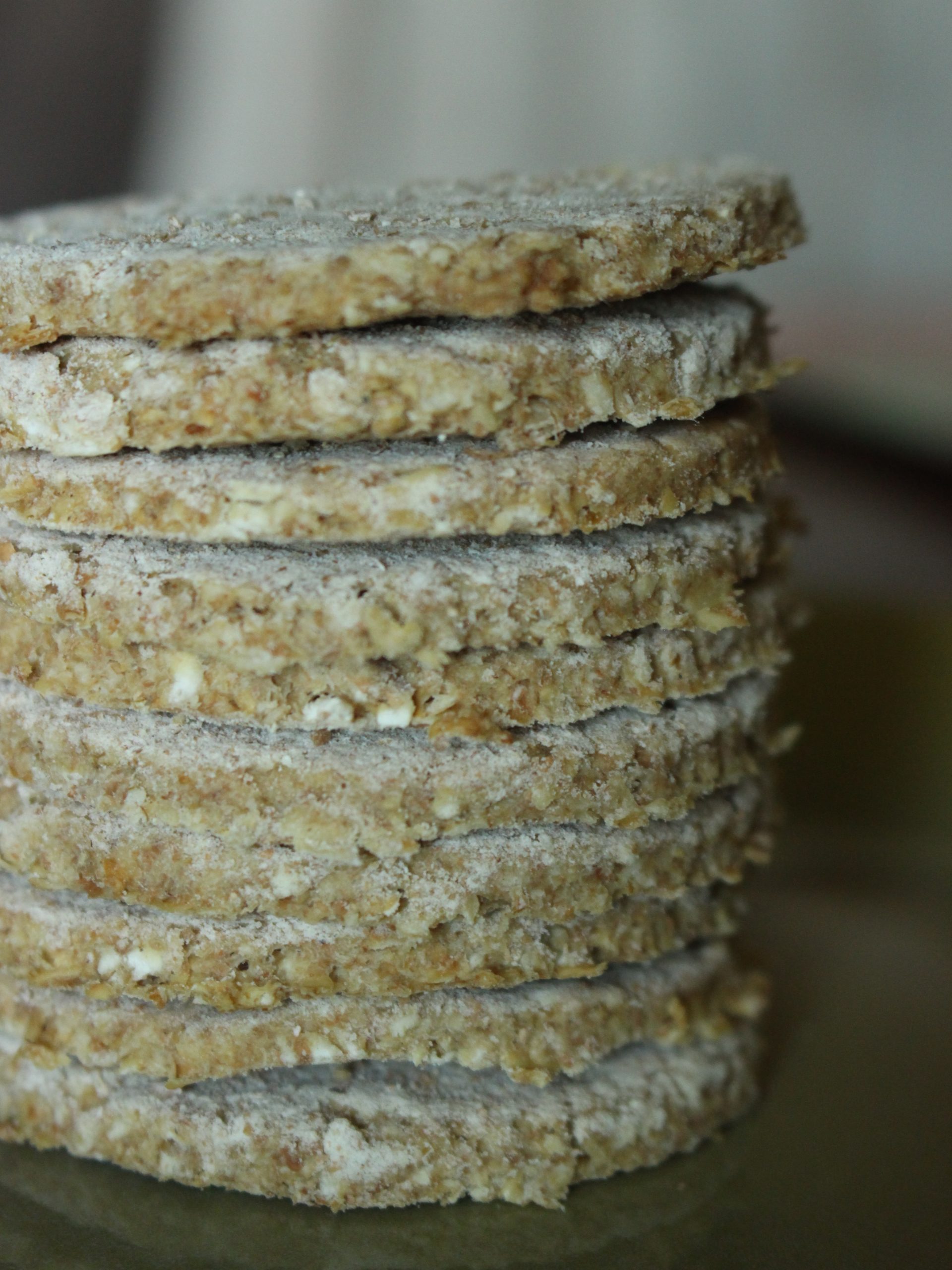
Biting into a freshly-made, golden oatcake is a complete joy! First, there’s the satisfying snap as it breaks. Then the crumbly, crunchy oats impart their toasty flavour, and, as you chew, you understand why oats are called the ‘golden’ cereal. Oatcakes are the taste equivalent of a bountiful harvest on a sunny, summer’s day.
Oatcakes are the taste equivalent of a bountiful harvest on a sunny, summer’s day
Before wheat…
And yet, as well as being incredibly tasty, these cakes, in their heyday, were completely practical – being one of the earliest forms of bread in the United Kingdom, sustaining populations long before wheat ever got a look in. The ‘cake’ in their name may, to our modern ears, conjure up images of light, fluffy treats, but here the word is used in its original sense: a round, flat portion of bread. Oatcakes are actually more like crackers than cakes and can substitute bread in so many meals.
Authentic Scottish oatcake ingredients
My recipe draws on original methods. It’s simple – oats, water and a touch of salt, plus a bit of fat (I use the authentic lard or butter) to help bind the dough. The Scots traditionally use oatmeal – oats ground to a coarse flour in a stone mill – (these are often called ‘Scottish Oats’ in the USA) but you can also use the more easily-available rolled oats.
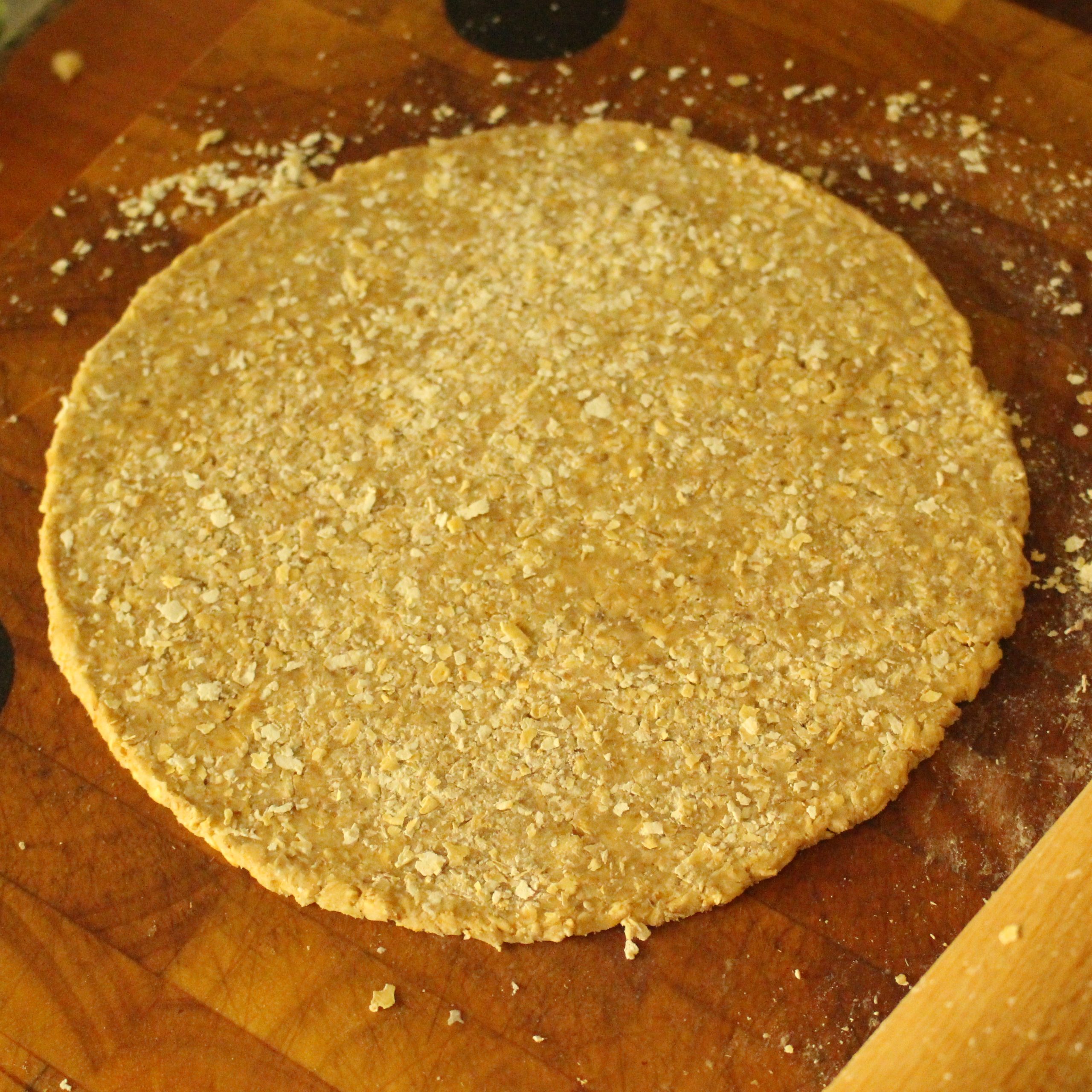
They would have traditionally been cooked on a griddle above a fire, enclosed ovens being a relatively recent invention. I have cooked these both on the stove using a cast iron pan and also in the oven. The results are quite different and I’d suggest trying both. This recipe is written for stove-top preparation. If you’d like to use the oven, check the note at the after the recipe.
Note about soaking: The Scots did not pre-soak their oats when making oatcakes. If you wish to, you can soak the oats with an acidic medium and then dehydrate them back to dryness ready for this recipe.
Traditional Scottish Oatcakes
“Never have I tasted anything so delicious. I’m now an oatcake devotee!”
Dawn, on my recipe for Traditional Scottish Oatcakes
Preparation time: 10 minutes
Cook time: 40-45 minutes
Servings: 3 large oatcakes which can be divided into a total for 12 portions
Ingredients:
200g rolled oats (If you want to be more authentic, you can use 100g medium oatmeal plus 100g fine oatmeal (often called ‘Scottish oats’ in the USA))
2.5g salt
14g lard – you can substitute butter
90g water
Extra oat (or other) flour for rolling
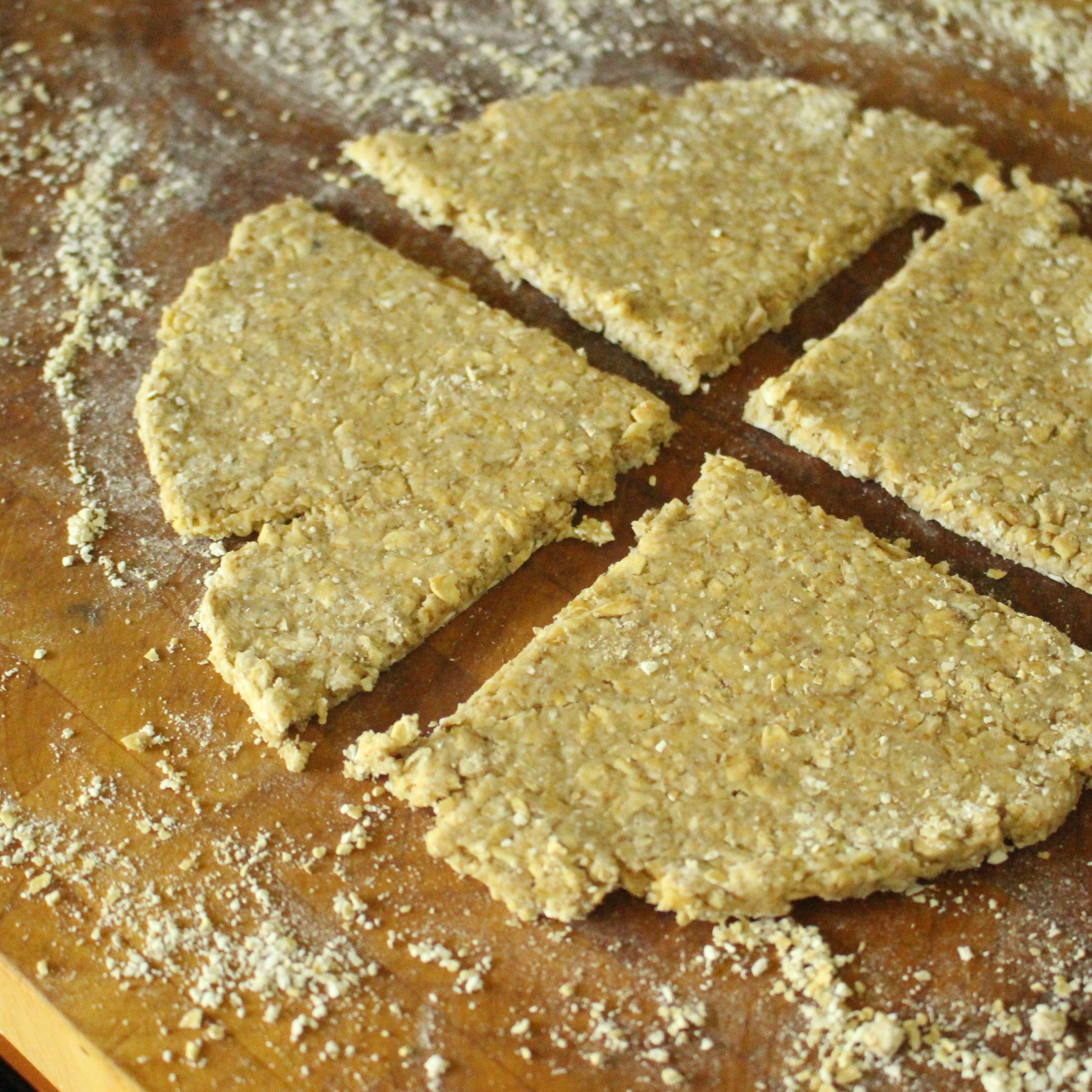
Method:
- Preheat a cast iron pan that’s at least 8in/20cm on medium-high and, when hot, turn it down to low.
- Measure the oatmeal (or rolled oats) into a heatproof bowl and add the salt, mixing well.
- Heat the water and the lard together in a small, lidded saucepan. Aim for the lard to be completely melted but the water not quite boiling.
- Sprinkle a working surface with oat (or other) flour in preparation for the rolling/shaping.
- Add the hot water/lard to the oats and mix well. The mix will be hot, so be careful (start with a spoon if necessary before switching to hands).
- Bring the mix together into a dough. Squeeze it with you hand, encouraging its stickiness to work it into a large ball.
- Working swiftly (the dough is easier to form when it’s still warm), divide the ball into three and place the first piece onto the floured surface. Using your palms/hands (or a floured rolling pin) flatten and shape the dough into a circle about 6in/15cm diameter, 3mm deep.
- Cut the circle into four quarters (these quarters are traditionally called farls).
- Repeat this process with the remaining two dough pieces, so that you have three oat cakes, each divided into four pieces.
- Carefully transfer the oat cakes onto the hot cast iron pan (no cooking fat is needed). You’ll need to do this three times, cooking each oatcake one at a time.
- Cook them for 5-10 minutes per side, until they start to show a golden surface and lift slightly away from the pan at the corners.
For cooking oatcakes in the oven:
If you wish use an oven instead of the stove, pre-heat it to 180C/355F before starting, place the oatcakes onto baking trays (no need to grease) and cook for 25-30 minutes until lightly golden in colour, turning them halfway through the cooking time.
How to store these traditional Scottish oatcakes
These oatcakes are best eaten fresh, ideally still warm. They were traditionally stored packed in chests of recently-ground oatmeal. If you, like me, don’t have one of those, you can keep them in an air-tight container, they’ll maintain their crispness for a day or two this way.
Other articles/recipes you might like:
Why Our Scottish Ancestors Didn’t Eat Rolled Oats
The Fascinating History of Jannock: The Giant Oat Bread That Defined Authenticity!
Want another traditional Scottish oat dish?
If you’d like to explore the way the Scottish traditionally fermented their oats into a creamy, easy-to-digest porridge and a tangy probiotic drink, check out my course Sowans: The Scottish Oat Ferment here!
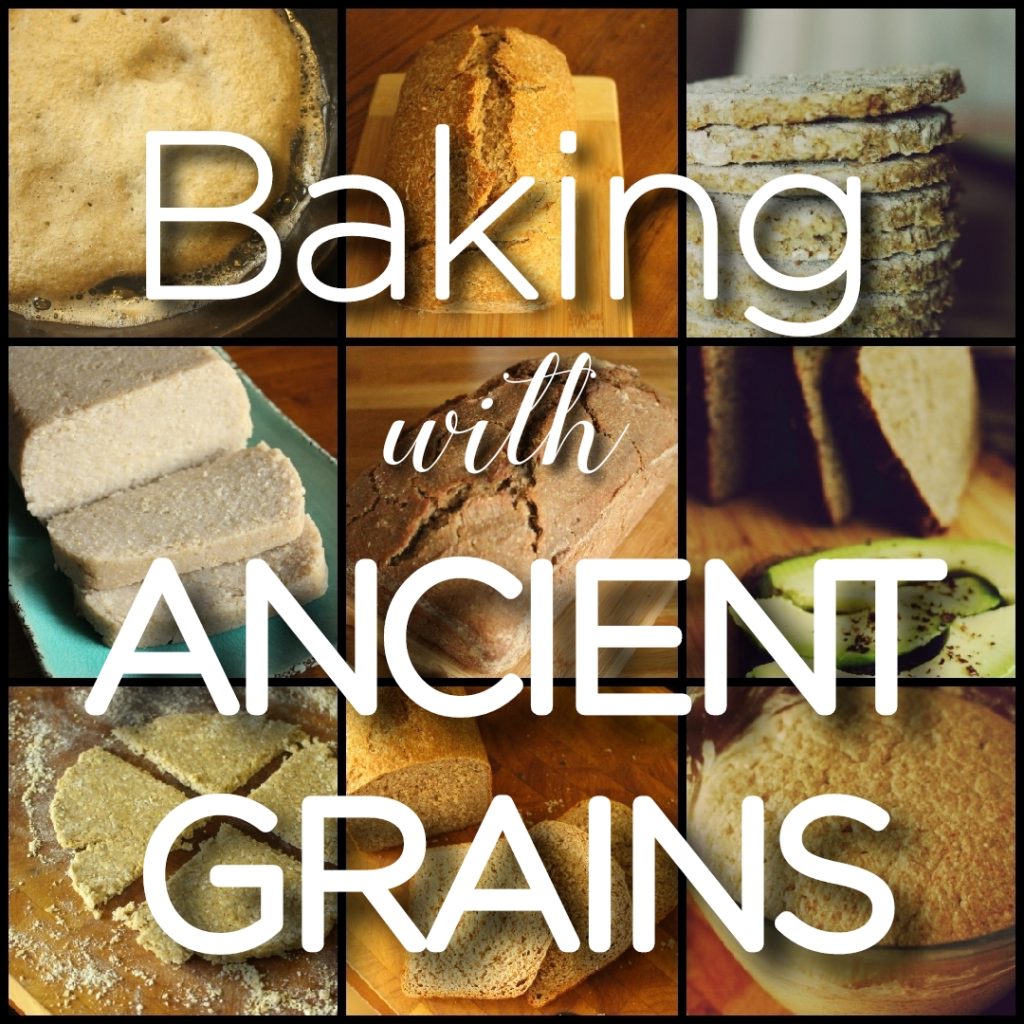
Bring ancient grain baking into your kitchen!
Download my free 30-page guide with five healthy and tasty 100% ancient grains recipes.
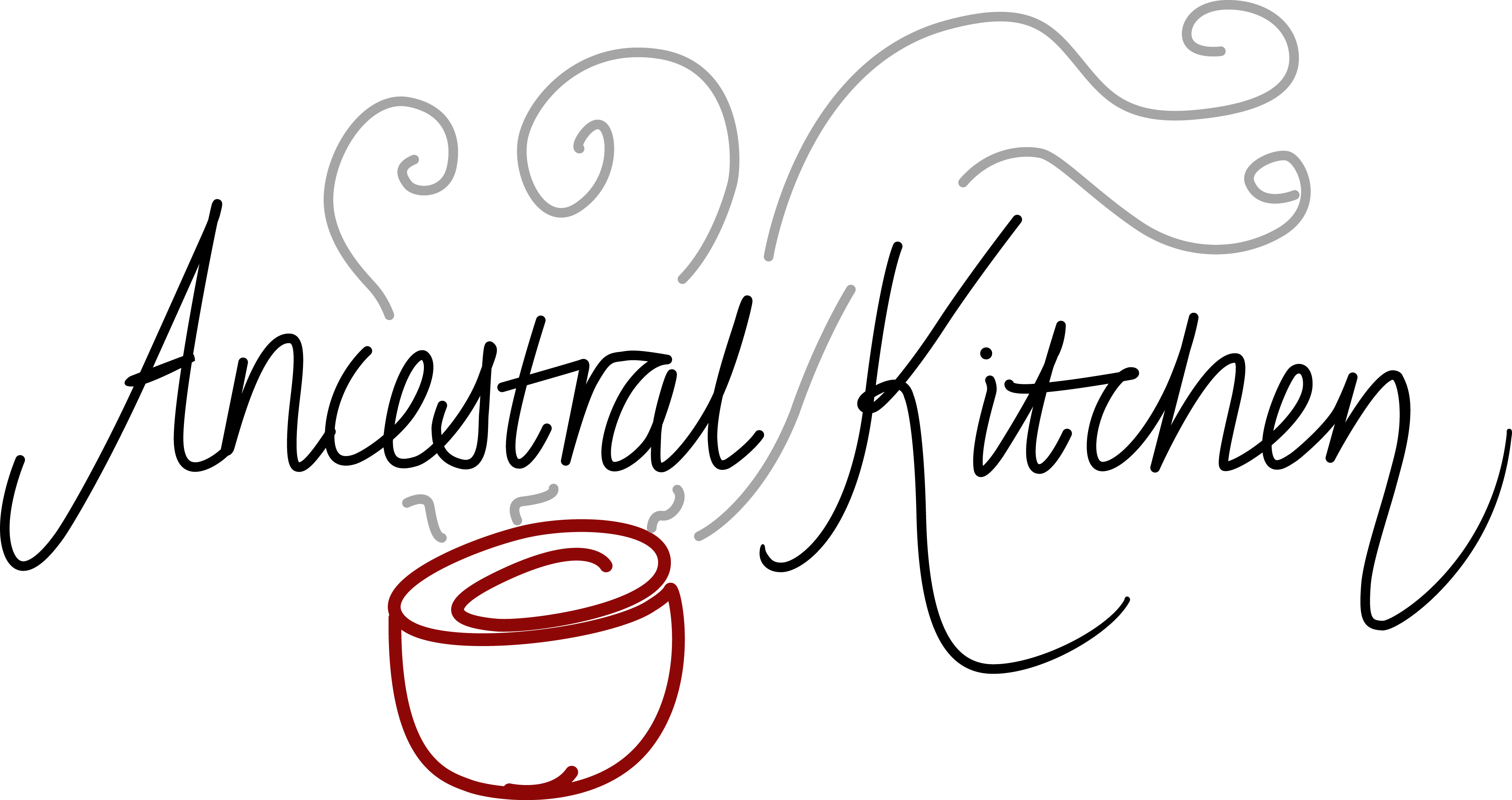

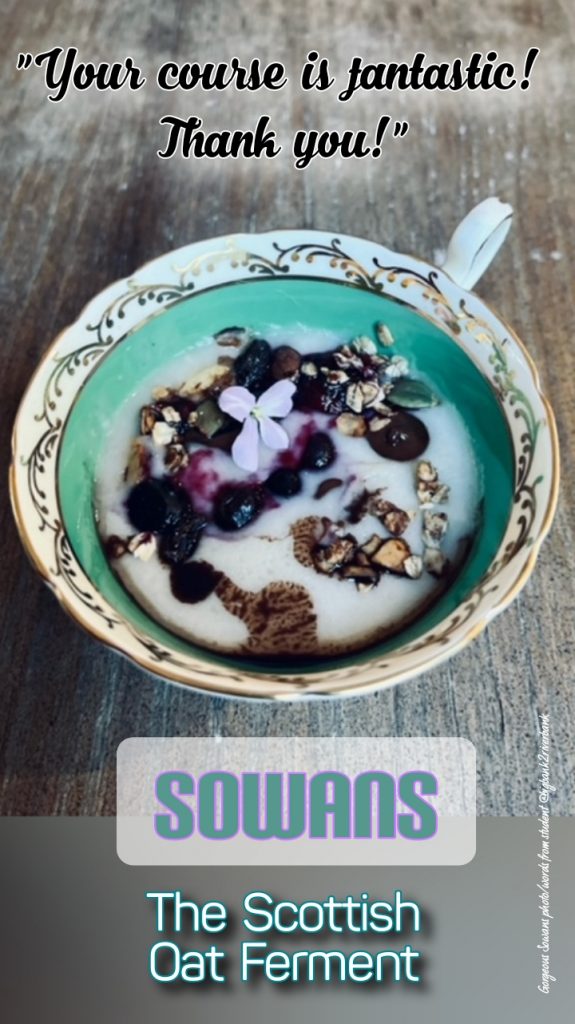
I just made these for the first time. They are delicious, simple to make, and satisfying to eat. I substituted 2T of butter for the lard because that is what I had on hand. They took about 4 mins each side to cook in my cast iron pan and just like Alison said I needed no extra cooking oil.
Brilliant! They were sometimes made with butter. I’ve read that it makes for a more brittle oatcake than lard, but I haven’t noticed that myself. How did you eat them?
I sat down to read a book about Scotland, a daughter of Fife by Amelia E Barr, and it mentioned oat cakes, so I found your recipe and made some. I’m eating one now as I continue to read the book. Thanks so much for publishing this recipe. Full disclosure, I put honey raisins, and some plain yogurt on one of them and it was delicious. They are also great plain! Thanks again. Kelly
That’s eating in context 🙂 So glad you enjoyed them Kelly!
I feel like this is a silly question, but are you starting the recipe with cooked oats, which is what I call oatmeal. Or do you mean dried oats when you say “200 grams oatmeal” on the recipe list?
Hi Rachel. I am starting with uncooked oats. Traditionally, oatmeal (that is oats crushed in a stone mill, not rolled) were used. Rolled oats weren’t invented until a couple of hundred years ago. You can use rolled oats if you can’t get oatmeal – the recipe works fine with them!
GORGEOUS GOURMET OATCAKES AND SO EASY. NUTTY TASTE. BROSE IN A BISCUIT.
Would the oatmeal in the recipe be the same as stone cut oats.
Hi Laurie,
If you mean steel-cut, they aren’t the same. Steel-cut are bigger pieces and take longer to cook.
This recipe traditionally used stone-ground oats (like these I found in the US – I’m guessing you are there – https://purcellmountainfarms.com/products/scottish-oats-stone-ground/). We call these stone-ground oat ‘oatmeal’ in the UK.
I hope this helps!
“Oatmeal”can be easily made in a steel blade blender, or I like my old grain grinder. I grind 1/3 from steel cut oats and 2/3 from rolled oats by hand. Yum!
Thanks Susan.
Have you done a side-by-side comparison of your method and oatmeal?
I have a stone grain mill and a steel roller mill and I have not been able to replicate the texture of bought oatmeal in my own home. I always end up with too much ‘dust’ because these methods create a large range of different sized particles.
I guess with a few different sized sieves and a lot of patience one could create various grades of oatmeal.
For the Americans like me, Bob’s Red Mill makes an excellent Scottish Oatmeal. That’s what you want for these. Alternatively you can buzz whole rolled oats for a few seconds in a blender.
Thanks! I have recently found Bob Red Mill’s Sottish oats and am now telling all my followers in the US about them! We have easy access to oatmeal here in the UK, but when I run out, I find I can make these oatcakes with whole rolled/flaked oats without problems. I’ve not tried them with oat flour made by blending rolled oats, but I imagine they are smoother than the whole flaked oats version.
Hi! I don’t blend them long enough to become flour— just a couple of quick pulses, no more.
That’s nice – so they are still a little chunky!
I just found your oatcake recipe and .like your basic approach. Could you possibly give the measurements in cups and ounces until we have become more familiar with the decimal system?£
Hi! Oats vary in size so much that it’s really hard for me to give a cup measurement and make it accurate. You could try and online conversion (google has them but if you look further than a couple, you’ll find they vary) and see how it goes, altering next time to get it spot on for your oats. I hope this helps.
Is the cast iron pan essential or can I use a normal pan as I do not have a cast iron pan? Thank you.
No, it’s not essential, just more traditional. You can use other pans 🙂
Born, bred and living in Scotland, steel-cut oatmeal is known here as “pin head oatmeal”. Nick Nairn, a local chef from my area does a variety of oatcakes, which are well known
Hi Wylma,
Whereabouts in Scotland are you? Yes, oats have so many different names, depending on where you are! I know Nick Nairn from all his TV work. Have you made his oatcakes? I’m wondering what their ingredients are 🙂
He uses palm oil. I often buy Narins, but I like my own best. The recipe I follow is identical to yours. I put my rolled oats in the blender for a second or two. I bake them in the oven.
never have I tasted anything so delicious! vegan — olive oil. no longer strong enough to manage my cast iron, so baked them instead. a bit crumbly, but who cares. they are absolutely delicious. now an oatcake devotee. thnx! May God bless you abundantly!
Hi Dawn, What a wonderful note. Thank you for sharing. I’ve not made them with olive oil yet so it’s good to know they worked. Baking them is a good substitute for the pan and imparts a slightly different flavour/texture. I’m going to try and quote you in the main body of the article, hope that’s OK with you. Enjoy making them again and again!!